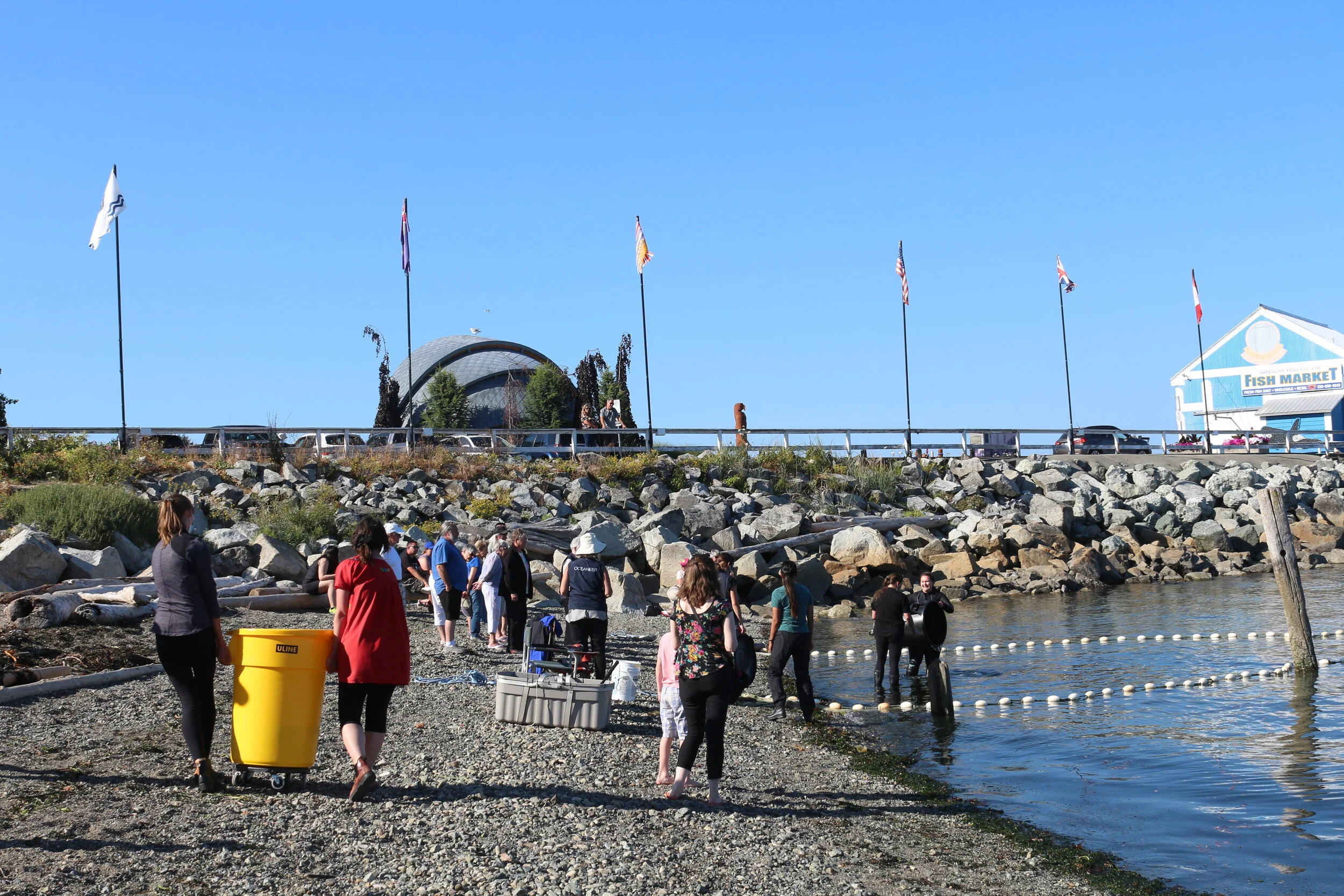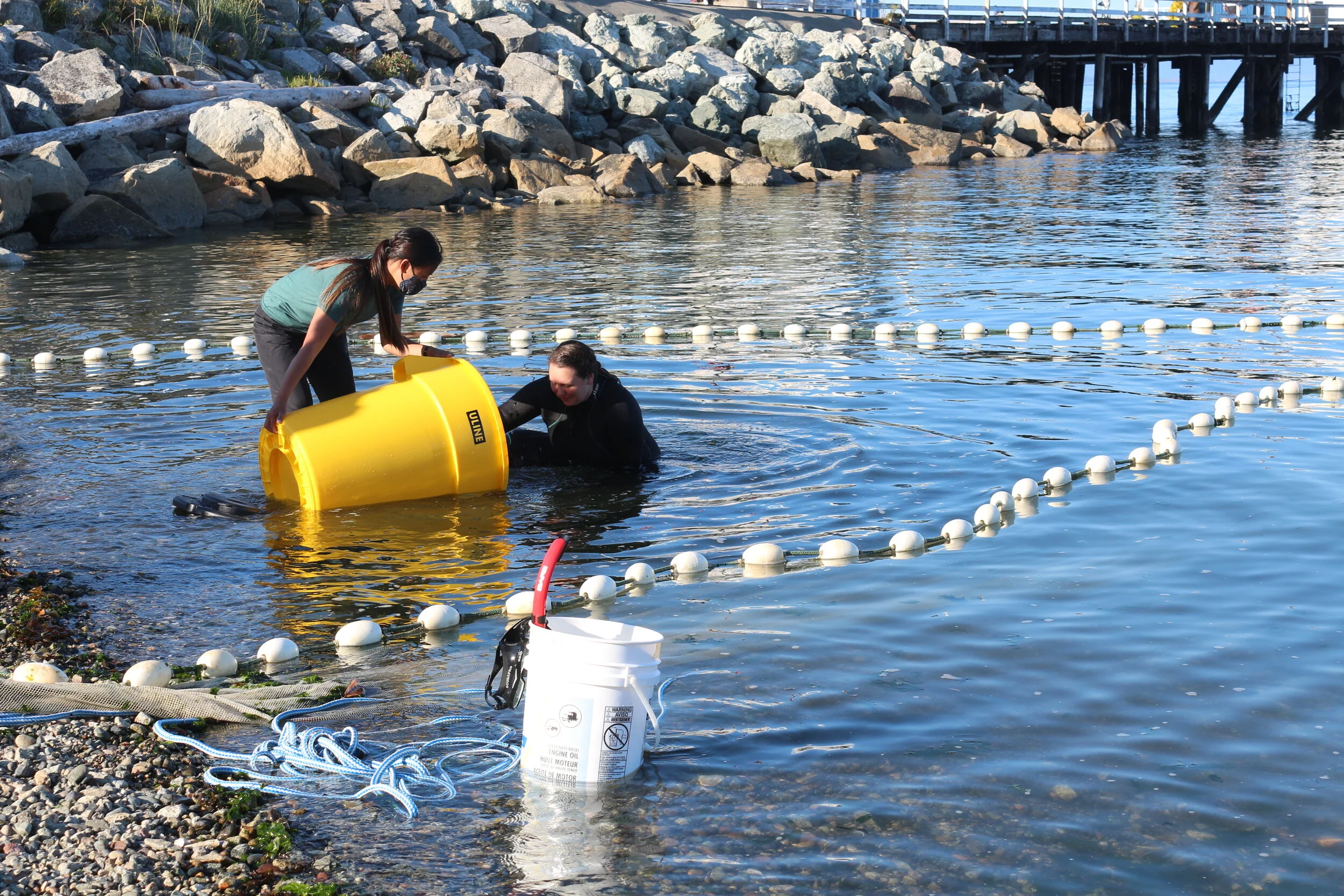Did you know that the Shaw Centre for the Salish Sea sends its salmon back to the sea?
Pacific salmon are featured animal ambassadors at the Centre. Of the five species of Pacific salmon, these ambassadors have always been Chinook. The Centre’s salmon program is one of display and release; smolts, small finger-sized fish, acquired from a local hatchery, are displayed for two years. By then they have reached adulthood and after veterinary inspections, paperwork, permits and planning they are released into the Salish Sea.
For the plan to work, it required all hands on deck. On July 13, twenty-eight staff and volunteers put in overtime to ensure the Centre’s school of salmon could safely swim into the next chapter of their lives.
Transporting salmon to Glass Beach, Sidney BC
Historically, the salmon have been released by dip netting the fish into the water one at a time. This year, a new strategy was trialled — releasing all the salmon at once. Salmon are a type of fish that find safety in numbers and live in a school. By creating a temporary sea pen along the Sidney waterfront, the salmon could be gathered together until all 176 of them were ready for release.
Salmon released into temporary pen
Getting the fish to the pen was a well organized and heavily choreographed process. From inside the Centre and through a caravan of staff and volunteers, bins of salmon were relayed to Glass Beach and finally to Aquarist Amanda who corralled the fish in the pen. After the last fish were safely placed in the pen, the entire team — and a few onlookers — let out a hurrah and a farewell as the net was lowered.
Head of Animal Care, Kit Thornton, adds this about the Centre’s salmon release program, “By the time the fish are set for release, they are robust and ready to spend another two plus years at sea before heading to their natal river or stream to spawn. Releasing these fish allows them to complete their life cycle and continue the next generation. This is incredibly important at a time when many salmon populations are declining.”
Of course life in the open ocean presents some challenges. Before the salmon can return to spawn, they must live and swim through a gauntlet of predators. A salmon’s place in the food web is critical; they are sustenance for a large suite of animals — larger fish, birds, bears, wolves and marine mammals including the endangered Southern resident killer whales. The food chain links and the role that salmon play in connecting land, rivers and sea form a large part of the educational conversations taking place at the Centre’s salmon exhibit.
This past May, the Centre received more than 200 Chinook salmon smolts from Sooke’s Jack Brooks Hatchery. These little fish will be on display for the next two years. With the success of the sea pen release process, they may finish their time at the Centre with the same experience. Until then, visit the Centre to watch these salmon grow and grow and grow and grow.
*Originally published in September’s Seaside Magazine


